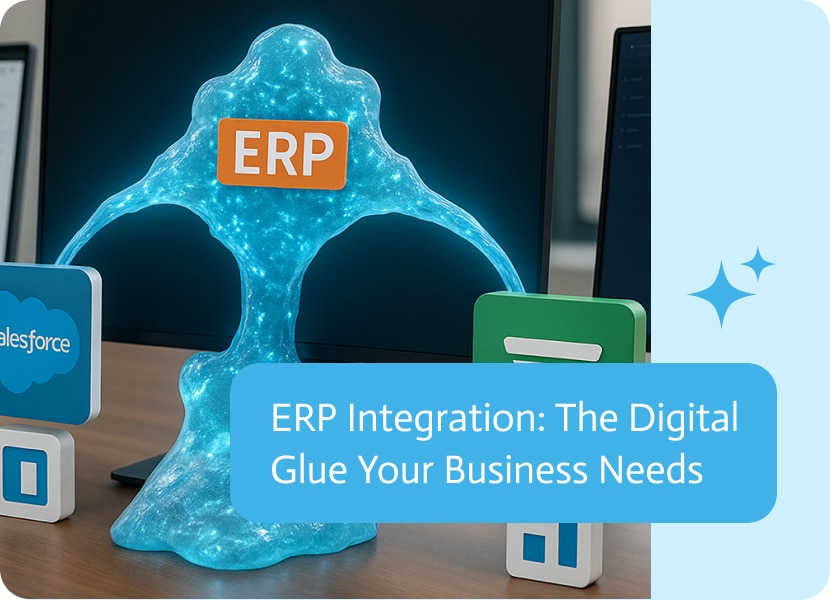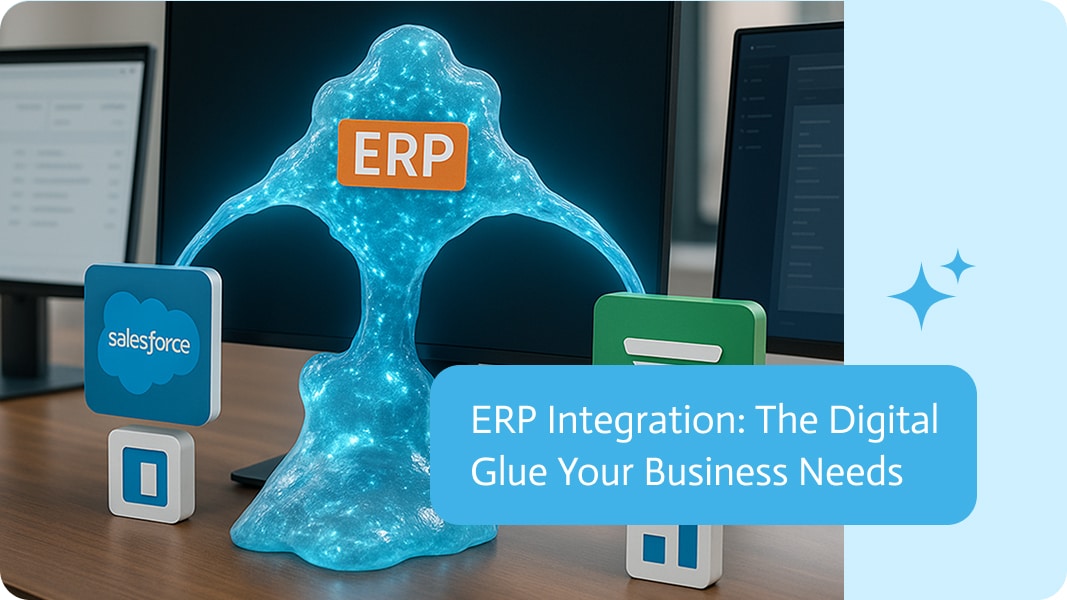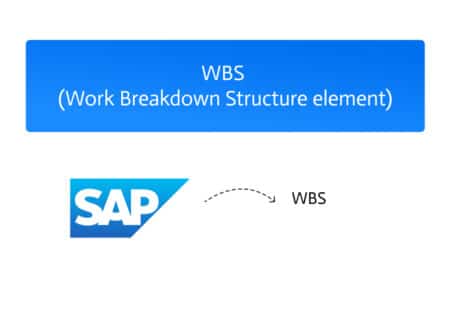

ERP System Integration: The Digital Glue Your Business Needs
ERP is short for Enterprise Resource Planning. It acts as the ‘central nervous system’ of your company.
An ERP system is software that integrates all your vital functions, including finance, human resources, inventory, sales, manufacturing, supply chain, customer service, and more, organized within one comprehensive system.
Let me set the tone: if your business operates on spreadsheets, frantic emails all over the place, and relies on the near-magical abilities of one office manager with deep and holistic knowledge, you are teetering on the edge of a chaotic spiral with a single “forgot password” click. This is where ERP system integration steps in. Underappreciated yet indispensable ERP integration is the unsung savior of business productivity in the contemporary corporate landscape.
Now, before you roll your eyes and mutter, “Not another tech buzzword,” hang tight. Because this one? It’s actually worth your time.
What Exactly Is ERP Integration?
ERP integration is the specific form of integration whereby your ERP is integrated with all your other software systems, apps, tools, and databases so that they communicate seamlessly. Gone are the days of manually inputting data from your eCommerce store into your accounting software and inventory syncs between warehouses. ERP integration steps up to the plate and says, ‘I’ll do that automatically. Thanks for the compliment.’
It’s the difference between your departments working together vs. everyone operating on their own island while screaming across the sea.
How ERP Integration Actually Works (Without the Nonsense)
When your ERP system is integrated, it acts like a central hub. Imagine a spider at the center of a web. All the little strands—your CRM, payroll system, email platform, eCommerce site, and point-of-sale tools, connect to that spider. Information zips back and forth in real time. No delays or mix-ups and no, “Oh, sorry, the system didn’t update.”
There are several ways to pull this off:
1. Custom Integration
Consider this the custom suit of the tech industry. Once you decide on exactly what you want, the developer will create a custom solution for you. Perfect, personalized, and a little pricey. However, it fits snugly and fulfills your needs exactly, more or less. Great for people who want complete control, but be warned, unless you have a brilliant team of code specialists, it’s not a quick fix and can occasionally turn into an endless project.
2. Native Integration
This is the “out-of-the-box” superhero cape, built right into the system. Imagine your favorite app and its built-in ability to play nicely with others. No fuss, no muss. It’s like having a universal remote that just works straight away. The benefit? Seamless, reliable, and usually faster to deploy. The downside? You’re limited to what’s baked in, so if you want something super specific, you might hit a wall faster than a Wi-Fi signal in a basement.
3. iPaaS Integration
This could be considered as middleman magic, like hiring an Uber driver who knows all the shortcuts. That’s what it’s like using iPaaS (Integration Platform as a Service). It effortlessly links your apps, data, and other services while staying in the cloud. You get agility, scalability, and the ability to plug and play like a tech DJ. Just remember: it’s not magic, sometimes you’ll need to tune the setup.
Why ERP Integration Isn’t Optional Anymore
Here’s a couple of totally real (definitely not fictional) business scenarios.
Scenario 1:
Ok, so your sales team closes a huge order, and there are high fives all around. But your inventory system wasn’t updated in real time, and it turns out you’re out of stock. Now you’re stuck in a situation with angry customers, awkward apologies, and a team meeting with that glaring look from the boss.
Scenario 2:
Traffic starts to spike after you launch a marketing campaign that blows the internet away. Orders begin to pour in, but because your marketing system isn’t linked to logistics, your warehouse doesn’t notice. Chaos unfolds, packages go to the wrong people, Karen gets someone else’s blender, and writes a scathing Yelp review.
All of this is preventable when your ERP integration ensures your systems are in sync. Real-time data flows across departments like a well-oiled machine. Or, more accurately, like a group chat where everyone’s actually paying attention.
The Real-World Benefits Of ERP Integration
One Source of Truth
By opening a single dashboard, you can see the truth, the whole truth, and nothing but the truth, rather than digging into five separate spreadsheets, each of which presents a different version of reality. Internal data is gathered and consolidated into a single, trustworthy source by integrated ERPs. The same real-time numbers are used by operations, sales, and finance. As a result, meetings will have more “Wow, we actually know what’s going on!” moments and fewer “Wait, where did you get that number?” arguments.
Massive Time Savings
Nobody was made to manually copy and paste data across platforms, let’s face it. ERP integration frees up your team to concentrate on work that matters most by automating laborious tasks involving data entry, syncing, and reconciliation. They can concentrate on strategy, service, and scaling rather than playing spreadsheet detective or double-checking inventory numbers like it’s a CSI episode. You’ll question how you ever managed without it. It’s like going from a bicycle to a bullet train.
Improved Decision-Making
You can’t steer the ship if you can’t see the iceberg. With integrated systems, data flows freely and updates automatically. That means reports are timely, accurate, and insightful. You get alerts that actually help: “Shipping costs spiked last month,” or “Returns in the Northeast are creeping up—might be time to investigate.” It’s like having a business sixth sense, but powered by real-time analytics instead of caffeine and crossed fingers.
Better Customer Experiences
Customers don’t care if your sales software doesn’t talk to your inventory system. They just want their stuff on time and without a dozen follow-up emails. ERP integration makes your backend seamless so your frontend doesn’t feel like a circus act. Order updates? Accurate. Inventory availability? Spot on. Delivery timelines? Predictable. And all of it leads to happy customers who don’t ghost you after one bad experience.
Scalability Without the Meltdowns
Nobody relishes the regulatory discord of assessments, tax season, or the General Data Protection Regulation However, having clean, traceable, and centralized data makes it much less unsettling. ERP integration eliminates the need to sift through spreadsheets, emails, and someone’s Dropbox “Important Docs” folder to demonstrate compliance. Without having a panic attack, you can present your work, support it, and continue with your day.
Compliance Without the Cold Sweats
Audits, tax season, GDPR—regulatory chaos isn’t fun for anyone. But it’s a whole lot less terrifying when your data is centralized, clean, and traceable. ERP integration means you’re not hunting through emails, spreadsheets, and someone’s “Important Docs” folder on Dropbox to prove you followed the rules. You can show your work, back it up, and get on with your day, panic attack-free of course.
Why Do You Even Need ERP Integration
If your business has more than five employees and you’re juggling more than one software system, you’re already deep enough in the operational weeds to need ERP integration. You might not think you’re running a tech jungle, but if you’ve got different platforms handling sales, inventory, payroll, and customer data—and none of them are talking to each other—congrats! You’re officially ripe for some integration magic.
Who then, stands to gain from ERP integration? To be honest, almost everyone who works with moving parts—which is, let’s be honest, almost every modern business. However, the following sectors benefit greatly:
Manufacturing: ERP integration helps you prevent “Oops, we’re out of parts” situations when attempting to coordinate inventory levels with production schedules and order fulfillment. It keeps the shipping department sane and the machines running smoothly.
Retail & eCommerce: Without integration, maintaining accurate inventory across platforms is a nightmare, whether you’re selling online, in a physical store, or both. ERP becomes your best friend when you include order tracking, returns, and customer information. Or your least obnoxious coworker, anyway.Or at least your least annoying coworker.
Healthcare: From patient scheduling to billing to compliance (hello, HIPAA), healthcare orgs juggle a ridiculous amount of sensitive data. ERP integration doesn’t just help—it’s practically a requirement to keep things legal, efficient, and maybe even a little less chaotic.
Logistics & Supply Chain: You’ve got shipments moving, warehouses buzzing, vendors emailing, and customers waiting. If even one cog in this machine breaks down, the whole thing grinds to a halt. Integration helps you keep the whole operation running like a Swiss watch.
Finance: When you’re stuck stitching together spreadsheets from five different systems just to figure out where the money went last quarter, you’ve got a problem. ERP integration pulls all your financial data into one clean dashboard so you can forecast, report, and plan without losing your mind (or your weekend).
At the end of the day, if your business handles data—and that includes just about everyone—ERP integration is the difference between drowning in digital chaos and cruising down a well-oiled stream of information. It’s not just a nice-to-have anymore. It’s survival.
Typical Mistakes to Avoid (Let’s Be Honest)
- Becoming Frankenstein’s creation
- Avoid assembling haphazard systems and crossing your fingers. You’ll have a monster that nobody wants to handle. Make strategic plans for your integrations.
- Ignoring the Humans
- ERP integration involves more than just systems; it involves people. Educate your group. Ask them what they think. Don’t expect hugs when you introduce them to a new workflow on a Monday morning.
- Skipping the Test Phase
- You’d be amazed how many businesses skip testing and then wonder why everything’s on fire. Test. Tweak. THEN go live.
- Choosing the Cheapest Option
Sure, budget matters. But choosing the cheapest integration partner or tool can end up costing more in lost time, broken connections, and frantic weekend fixes.
ERP Integration: The Lowdown
ERP integration is more than a simple technological advancement. It makes the difference between a business that succeeds and one that fails. Your teams work together more effectively, your customers are more satisfied, and you have fewer headaches when your systems communicate with one another.
It’s not magic. It’s purely intelligent business. Additionally, remaining isolated is a surefire way to become irrelevant in a world where every rival is vying for efficiency like it’s the last cookie at a tech conference.
Final Thought: Don’t Be That Business
You know that one company that’s still manually updating inventory, faxing invoices, and wondering why their rivals are outperforming them.
ERP integration isn’t limited to large corporations. It’s for any company that is prepared to start acting strategically and quit playing catch-up. Connect your systems, then. Simplify your processes. Leave the chaos behind with Noca AI.
Additionally, quit sending spreadsheets to yourself via email for the sake of efficiency.


